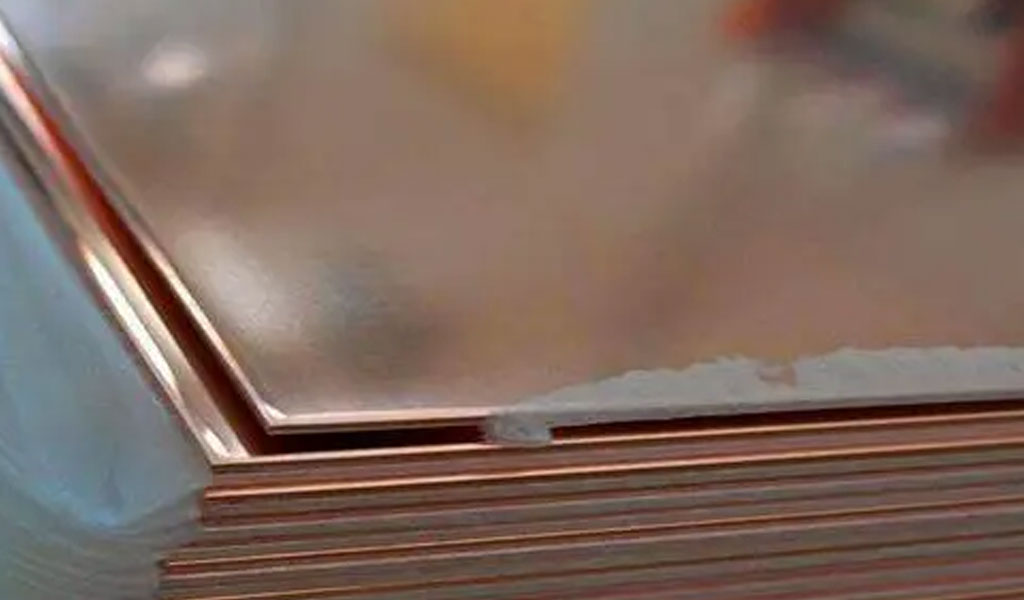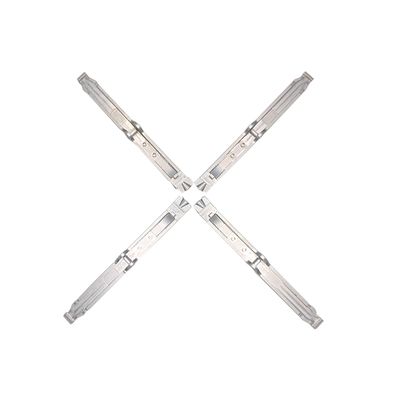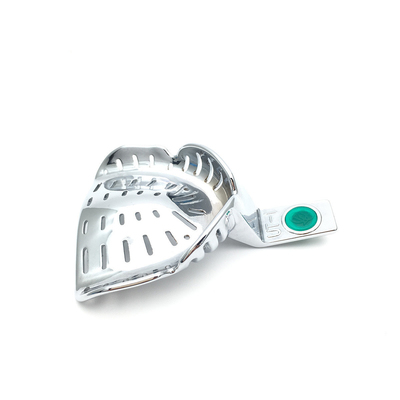Is Copper Magnetic?

Copper is one of the most well-known and widely used metals in the world. It has been utilized for thousands of years due to its excellent electrical conductivity, malleability, and resistance to corrosion. However, when it comes to magnetic properties, copper often raises questions. This article delves into the magnetic properties of copper, explaining in detail how it interacts with magnetic fields and what role it plays in various technological and industrial applications.
1. The Nature of Magnetism
1.1. Definition of Magnetism
Magnetism is a fundamental property of matter, typically related to the motion of electrons within atoms. Magnetism arises from the quantum mechanical nature of electrons, specifically their spin and orbital motions. Materials can exhibit different types of magnetism, including ferromagnetism, paramagnetism, diamagnetism, and antiferromagnetism.
1.2. Overview of Magnetic Materials
The most common magnetic materials are those that exhibit ferromagnetism, such as iron, nickel, and cobalt. These materials have domains of aligned atomic spins, making them capable of generating strong magnetic fields. In contrast, other materials, like copper, show much weaker responses to magnetic fields.
2. Copper's Atomic Structure and Magnetism
2.1. Electron Configuration of Copper
To understand copper’s magnetic properties, we must first examine its atomic structure. Copper (Cu) has an atomic number of 29, meaning it has 29 protons and 29 electrons. Its electron configuration is [Ar] 3d^10 4s^1. This configuration indicates that copper has a full d-orbital (3d^10), which is important for understanding its magnetic behavior.
2.2. Why Copper Is Not Ferromagnetic
Ferromagnetism requires unpaired electrons and aligned electron spins. In copper, however, all electrons in the 3d orbital are paired, meaning there is no net spin magnetic moment. As a result, copper does not exhibit ferromagnetism and cannot be magnetized like iron or nickel.
3. Copper's Response to Magnetic Fields
3.1. Diamagnetism in Copper
Copper is classified as a diamagnetic material, meaning it creates an opposing magnetic field when placed in an external magnetic field. This response occurs because the movement of electrons in copper slightly alters under the influence of a magnetic field, producing a weak repulsive force.
3.2. Comparison to Paramagnetism and Ferromagnetism
In paramagnetic materials, the magnetic dipoles align with external fields but are much weaker than in ferromagnetic materials. Copper, as a diamagnet, exhibits even weaker interactions with magnetic fields. The key difference between diamagnetism and ferromagnetism is that diamagnetic materials like copper repel magnetic fields, whereas ferromagnetic materials attract them.
3.3. Lenz’s Law and Copper's Magnetic Behavior
Lenz’s law describes how diamagnetic materials like copper react to changing magnetic fields. According to this law, the induced magnetic field within copper opposes the external magnetic field that causes it. This effect is often observed in demonstrations of electromagnetic induction, such as when copper is dropped through a strong magnetic field and experiences a noticeable slowing effect.
4. Electromagnetic Applications of Copper
4.1. Copper in Electric Motors and Generators
Copper’s excellent electrical conductivity and low magnetic susceptibility make it an ideal material for electrical wiring in motors and generators. Copper coils within these machines generate magnetic fields when an electric current flows through them, a principle fundamental to both motor operation and electrical generation.
4.2. Eddy Currents in Copper
Eddy currents are loops of electric current that are induced in conductors when they are exposed to a changing magnetic field. In copper, eddy currents can produce significant heating due to copper’s low resistance. This property is exploited in electromagnetic induction heating systems, such as induction cooktops.
4.3. Applications in Magnetic Levitation and Damping Systems
Copper’s diamagnetic properties are used in certain magnetic levitation (maglev) systems, where it plays a role in stabilizing and damping motions in the presence of magnetic fields. When magnets move near a copper conductor, eddy currents are induced that resist the motion, creating a stabilizing force.
5. Copper and Superconductivity
5.1. Superconductivity Overview
Superconductivity is a phenomenon where certain materials exhibit zero electrical resistance below a critical temperature. These materials can also expel magnetic fields, a behavior known as the Meissner effect.
5.2. Copper and High-Temperature Superconductors
Copper plays a role in the development of high-temperature superconductors, particularly copper-oxide compounds known as cuprates. While pure copper itself is not a superconductor, cuprates have been extensively researched for their ability to conduct electricity with zero resistance at relatively high temperatures (compared to traditional superconductors).
5.3. Applications of Copper-Based Superconductors
Copper-based superconductors are used in a range of advanced applications, including magnetic resonance imaging (MRI) machines, particle accelerators, and maglev trains. The strong magnetic fields generated by superconductors are crucial in these technologies, although the copper itself is not magnetic.
6. Interaction of Copper with Strong Magnetic Fields
6.1. Copper in Magnetic Field Shielding
Although copper is not magnetic, it is often used in magnetic field shielding applications. This is because copper is highly conductive and can block electromagnetic radiation, including the fields associated with alternating currents (AC) and radio frequencies (RF).
6.2. The Skin Effect in High-Frequency Magnetic Fields
In high-frequency applications, such as in radio transmitters, copper exhibits a phenomenon called the "skin effect." At higher frequencies, the induced current in copper is concentrated near the surface of the conductor. This effect plays a key role in the design of antennas, transmission lines, and other RF equipment.
7. Copper Alloys and Magnetic Properties
7.1. Beryllium Copper
Beryllium copper is a notable copper alloy with superior mechanical properties. Although it retains the non-magnetic nature of copper, it is used in environments where both mechanical strength and non-magnetic behavior are important, such as in precision tools and aerospace components.
7.2. Copper-Nickel Alloys
Copper-nickel alloys, such as Monel, are used in applications where corrosion resistance and non-magnetic behavior are essential. These alloys are particularly useful in marine environments and medical devices, where the non-magnetic property is beneficial.
8. Experiments and Demonstrations Involving Copper and Magnetism
8.1. Demonstrating Diamagnetism with Copper
Simple demonstrations, such as dropping a copper pipe through a magnetic field, can visually showcase copper’s diamagnetic properties. The slowing of the copper pipe is due to the generation of eddy currents that oppose the motion.
8.2. Electromagnetic Induction and Copper
Another classic experiment involves moving a magnet through a coil of copper wire. The changing magnetic field induces a current in the copper, illustrating the fundamental principle of electromagnetic induction, which is essential in the generation of electricity.
9. Conclusion
Copper, while not magnetic in the traditional sense, exhibits fascinating interactions with magnetic fields. As a diamagnetic material, copper repels magnetic fields, although the effect is weak compared to materials like iron. Its non-magnetic nature, combined with excellent electrical and thermal conductivity, makes copper a valuable resource in various technological applications, including electrical wiring, motors, and superconductors. Understanding the properties of copper and how it interacts with magnetic fields provides insight into both fundamental physics and modern engineering.
Reprint Statement: If there are no special instructions, all articles on this site are original. Please indicate the source for reprinting:https://www.cncmachiningptj.com/,thanks!
 PTJ® provides a full range of Custom Precision cnc machining china services.ISO 9001:2015 &AS-9100 certified. 3, 4 and 5-axis rapid precision CNC machining services including milling, turning to customer specifications,Capable of metal & plastic machined parts with +/-0.005 mm tolerance.Secondary services include CNC and conventional grinding, drilling,die casting,sheet metal and stamping.Providing prototypes, full production runs, technical support and full inspection.Serves the automotive, aerospace, mold&fixture,led lighting,medical,bicycle, and consumer electronics industries. On-time delivery.Tell us a little about your project's budget and expected delivery time. We will strategize with you to provide the most cost-effective services to help you reach your target,Welcome to Contact us ( [email protected] ) directly for your new project.
PTJ® provides a full range of Custom Precision cnc machining china services.ISO 9001:2015 &AS-9100 certified. 3, 4 and 5-axis rapid precision CNC machining services including milling, turning to customer specifications,Capable of metal & plastic machined parts with +/-0.005 mm tolerance.Secondary services include CNC and conventional grinding, drilling,die casting,sheet metal and stamping.Providing prototypes, full production runs, technical support and full inspection.Serves the automotive, aerospace, mold&fixture,led lighting,medical,bicycle, and consumer electronics industries. On-time delivery.Tell us a little about your project's budget and expected delivery time. We will strategize with you to provide the most cost-effective services to help you reach your target,Welcome to Contact us ( [email protected] ) directly for your new project.

- 5 Axis Machining
- Cnc Milling
- Cnc Turning
- Machining Industries
- Machining Process
- Surface Treatment
- Metal Machining
- Plastic Machining
- Powder Metallurgy Mold
- Die Casting
- Parts Gallery
- Auto Metal Parts
- Machinery Parts
- LED Heatsink
- Building Parts
- Mobile Parts
- Medical Parts
- Electronic Parts
- Tailored Machining
- Bicycle Parts
- Aluminum Machining
- Titanium Machining
- Stainless Steel Machining
- Copper Machining
- Brass Machining
- Super Alloy Machining
- Peek Machining
- UHMW Machining
- Unilate Machining
- PA6 Machining
- PPS Machining
- Teflon Machining
- Inconel Machining
- Tool Steel Machining
- More Material





